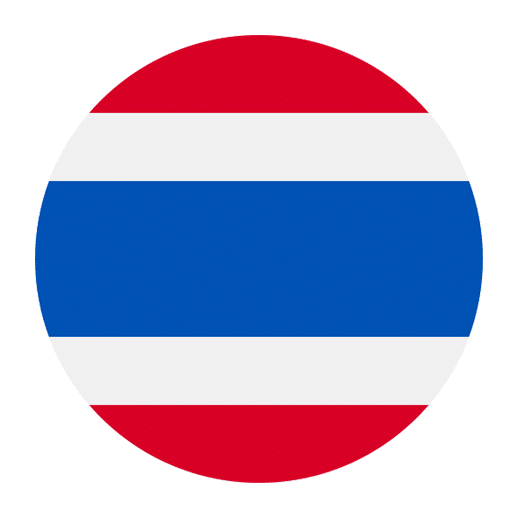The Thai language, also known as Siamese or Central Thai, is the official language of Thailand and is spoken by over 69 million people. With its distinct tones and script, it stands out as one of the most fascinating languages in Southeast Asia. The history and origin of the Thai language are deeply intertwined with the cultural, political, and historical developments of the region. This article delves into the rich history and evolution of the Thai language, offering insights into its roots, development, and modern usage.
Early Origins and Proto-Tai Languages
The Thai language belongs to the Tai-Kadai language family, which includes various languages spoken in Southeast Asia and Southern China. The Tai-Kadai languages are believed to have originated from a common ancestral language spoken in Southern China around 2000-3000 years ago. This proto-language split into various branches, one of which migrated southwards and eventually evolved into what we know today as Thai.
The migration and subsequent settlement of Tai-speaking peoples in the region that is now Thailand played a significant role in the development of the Thai language. Over centuries, these early Tai settlers interacted with other ethnic groups, including the Mon and Khmer, who already inhabited the region. These interactions influenced the early forms of Thai, incorporating elements from the Mon-Khmer languages.
Influences from Sanskrit and Pali
As the Tai people established themselves in the region, they came into contact with Indian culture, primarily through trade, religion, and political relations. This contact had a profound impact on the Thai language, especially in terms of vocabulary. Sanskrit and Pali, the liturgical languages of Hinduism and Buddhism respectively, contributed significantly to the Thai lexicon.
During the first millennium CE, the spread of Buddhism in Southeast Asia brought with it a host of religious texts and practices. Many of these texts were written in Pali and Sanskrit, leading to the incorporation of a substantial number of loanwords into Thai. Today, many Thai words related to religion, philosophy, science, and the arts have their roots in these ancient languages. For instance, words like “พระ” (phra, meaning monk), “ธรรม” (tham, meaning dharma or law), and “นิพพาน” (nibbana, meaning nirvana) are derived from Pali and Sanskrit.
The Sukhothai Period
The establishment of the Sukhothai Kingdom in the 13th century marked a significant milestone in the history of the Thai language. The Sukhothai period is often regarded as the golden age of Thai culture and language. It was during this time that the Thai script was developed by King Ramkhamhaeng the Great, who is credited with creating the first Thai alphabet.
The Sukhothai script was influenced by the Old Khmer script, which in turn was derived from the Pallava script of Southern India. This script laid the foundation for modern Thai writing, and many inscriptions from this period provide valuable insights into the language’s development. The Ramkhamhaeng Inscription, dating back to 1292, is one of the earliest examples of Thai writing and offers a glimpse into the language and culture of the time.
Characteristics of the Sukhothai Script
The Sukhothai script was characterized by its simplicity and clarity. It included 44 consonants and 18 vowels, with distinct symbols for tone markers. Unlike modern Thai, the Sukhothai script did not use spaces between words, making it somewhat challenging to read for contemporary learners. However, the phonetic system and structure established during this period have endured, forming the basis for the modern Thai script.
The Ayutthaya Period
Following the decline of the Sukhothai Kingdom, the Ayutthaya Kingdom emerged as a dominant political and cultural force in the region. The Ayutthaya period, which lasted from the 14th to the 18th century, was marked by significant linguistic and cultural developments.
During this time, the Thai language continued to evolve and absorb influences from neighboring cultures. The Ayutthaya Kingdom maintained extensive trade and diplomatic relations with various countries, including China, Persia, Portugal, and Japan. These interactions introduced new vocabulary and linguistic elements into Thai, further enriching its lexicon.
Literary Achievements
The Ayutthaya period also witnessed a flourishing of Thai literature. Classical works such as “Lilit Phra Lo” and “Khun Chang Khun Phaen” were composed during this era, showcasing the richness and depth of the Thai language. These literary achievements not only reflect the linguistic prowess of the time but also provide valuable historical and cultural insights.
The Rattanakosin Period and Modern Thai
The fall of Ayutthaya in 1767 led to the rise of the Thonburi and subsequently the Rattanakosin Kingdom, with Bangkok as its capital. The Rattanakosin period, which began in the late 18th century, marks the transition from Old Thai to modern Thai. This period has seen significant changes and standardization in the Thai language.
Standardization and Modernization
King Rama I, the founder of the Chakri Dynasty, played a crucial role in the standardization of the Thai language. He ordered the compilation of the “Three Seals Law,” a comprehensive legal code that helped standardize legal and administrative language. Additionally, King Rama I initiated efforts to preserve and promote Thai literature, ensuring that classical works were transcribed and studied.
The reign of King Rama V (Chulalongkorn) in the late 19th and early 20th centuries further accelerated the modernization of the Thai language. Under his rule, Thailand underwent significant social and administrative reforms, including the establishment of a modern education system. This period saw the introduction of standardized textbooks and curricula, which contributed to the formalization of Thai grammar and usage.
The Role of the Royal Institute
The Royal Institute of Thailand, established in 1933, has played a pivotal role in the development and regulation of the Thai language. The institute is responsible for publishing dictionaries, grammar guides, and other reference materials that help maintain the standardization of Thai. It also oversees the creation of new words to accommodate technological and cultural changes, ensuring that the language remains relevant in the modern world.
Characteristics of the Thai Language
Understanding the key characteristics of the Thai language provides valuable context for its historical development. Thai is a tonal language, meaning that the pitch or tone used to pronounce a word can change its meaning. There are five tones in Thai: mid, low, high, rising, and falling. This tonal aspect can be challenging for learners, but it is an integral part of the language’s identity.
Phonetics and Pronunciation
Thai phonetics are relatively straightforward, with a clear distinction between voiced and unvoiced consonants. The language has a wide range of vowel sounds, which can be short or long. The pronunciation of Thai can vary significantly across different regions, but the Central Thai dialect is considered the standard and is used in official contexts.
Grammar and Syntax
Thai grammar is relatively simple compared to many other languages. It follows a subject-verb-object (SVO) word order, similar to English. There are no verb conjugations or noun declensions, and word order and context primarily convey grammatical relationships. Particles are used extensively to indicate questions, negation, and other grammatical nuances.
Writing System
The Thai writing system is an abugida, meaning that each consonant carries an inherent vowel sound. Vowels are indicated by diacritical marks placed above, below, before, or after the consonant. The script also includes tone markers to indicate the correct tone for each syllable. While the script may seem complex at first, it is highly systematic and logical once the basic principles are understood.
Modern Usage and Global Influence
In contemporary Thailand, the Thai language continues to play a central role in daily life, education, and governance. It is the medium of instruction in schools and is used in all official communications. However, the influence of globalization and technology has introduced new dynamics to the language.
Loanwords and Neologisms
The rapid advancement of technology and the increasing interconnectedness of the world have led to the introduction of numerous loanwords and neologisms into Thai. English, in particular, has had a significant impact, contributing words related to technology, business, and popular culture. For example, terms like “คอมพิวเตอร์” (khomphiwat, meaning computer) and “อินเทอร์เน็ต” (inthanet, meaning internet) are borrowed from English.
The Role of Media and Entertainment
Thai media and entertainment, including television, cinema, and music, have played a crucial role in shaping the modern usage of the language. The popularity of Thai dramas and pop music has not only reinforced the standard dialect but also introduced regional slang and colloquial expressions to a broader audience.
Conclusion
The Thai language is a testament to the rich cultural and historical tapestry of Thailand. From its early origins in the Tai-Kadai language family to its modern standardized form, Thai has evolved through centuries of interaction, adaptation, and innovation. Its unique script, tonal nature, and diverse influences make it a fascinating subject of study for linguists and language enthusiasts alike.
Understanding the history and development of the Thai language provides valuable insights into the cultural and historical context of Thailand. It highlights the resilience and adaptability of the language, which has continually evolved to meet the needs of its speakers. As Thailand continues to navigate the challenges and opportunities of the modern world, the Thai language remains a vibrant and essential aspect of its national identity.

